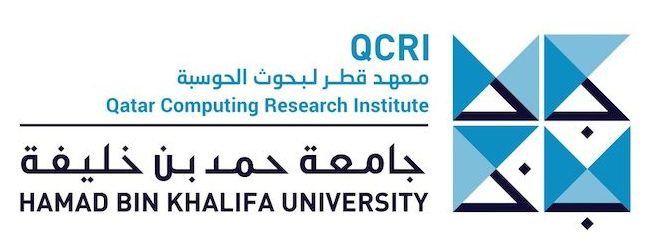By Lokendra Chauhan| Qatar Center for Artificial Intelligence
Introduction
Expert consensus on Artificial Intelligence (AI) is that it is a transformational technology and will alter the very nature of jobs as we know. While the world has been moving towards digitization and an increase in AI-adoption, the COVID-19 pandemic and the dramatic shift towards an online work environment have accelerated the adoption of AI-driven systems. To understand this phenomenon in the context of Qatar and recommend a path forward, we have released a QCAI whitepaper addressing this issue. The objective of this post presents a summary of our whitepaper titled, “The Impact of Artificial Intelligence on Qatar’s Labor Market”.
To realize Qatar’s vision of transitioning to a knowledge-based economy, the country has already been planning to invest and make strides in this direction with the release of the National AI Strategy in October 2019. The AI strategy was drafted by QCAI, and since then QCAI has been working with the various Ministries in Qatar to implement the strategy.
Qatar recognizes well that to ensure continued growth and prosperity, it needs to invest its capabilities and resources in a focused manner and with a long-term outlook to build a resilient knowledge-based economy. Therefore, building a data-driven society through increased digitization and AI-driven systems is imperative now.
It is also important to note that Qatar’s investment in world-class technology infrastructure and more importantly in building an exceptional higher education and research ecosystem has paid off well. The World Economic Forum (WEF) has recognized Qatar as a leader among MENA countries in two categories of vital importance for building AI-based automation i.e. 1) Quality education systems and 2) Ease of finding skilled employees. This means that in the MENA region, Qatar is competitively positioned to take advantage of the AI revolution.
Releasing this whitepaper is important for QCAI because AI Augmented Jobs is one of the main pillars of AI strategy. As it is evident, today we see that globally organizations are in constant pursuit of greater productivity growth through technology-enabled automation. To understand this better, we developed our method to calculate AI’s impact on jobs.
AI Impact Score
As AI enables automating the repetitive and mundane tasks, to quantify the automation impact of AI technology on jobs, we developed an AI Impact Score (AIScore) based on the following assumptions:
- A job is a collection of many different and related tasks to be performed by any employee
- The state-of-the-art of technology determines what can be potentially automated at that time
- Patents are a good proxy for the state-of-the-art of technology at any given time
- The extent of similarity between a task’s description and AI patent texts determines the likelihood of automation for the task i.e. greater the similarity, the higher the automation potential
- Automation impact of technology on tasks that make a job can be aggregated to measure the job level impact, and it also rolls up at the higher-level groupings like the industry sector
We built on the approach used by Michael Webb and other economists who analyzed the automation impact of AI and other technologies, but we used AI tools for our analysis.
Our algorithm to calculate the AIScore uses the extent of similarity between the task descriptions and the AI patents using an advanced NLP technique (AI) – word embedding vectors. This helped us objectively calculate the AIScore in a scalable manner (see Figure 1).
 Figure 1: Approach for AI Impact Score Calculation
Figure 1: Approach for AI Impact Score Calculation
What we found is that nearly half (~46.5%) of the tasks that comprise all of Qatar’s jobs can be automated with AI-based augmentation using existing technologies/patents (See Figure 2 below). It translates into 670,064 full-time equivalent (FTE) expat jobs and 49,764 FTE Qatari jobs. Most of this impact will be felt in eight out of the twenty-one sectors of the Qatari economy.

Figure 2: Industry-wise Potential of AI Impact in Qatar
Also, 95% of the workforce in Qatar is made up of an expatriate population that has a high turnover rate. Hence, the feared AI trade-off between economic growth versus income inequality is unlikely to hold in Qatar.
Recommendations
Our whitepaper recommends the following:
- Build a data-centric work culture at all levels that enable each worker to make better and evidence-based decisions
- A countrywide push to further reform education and make “Lifelong learning as the new way of life”. This involves instilling a new ethos of lifelong learning in Qatar’s institutions, society, and economy by building cultural acceptance for it.
- Through our AIScore analysis, we also identified the sectors of the Qatari economy that need to become the focus for investments in retraining, infrastructure, and other support programs. Following are the 7 priority sectors determined:
-
- Government and Defense
- Finance & insurance
- Information and communication
- Professional, Scientific, and Technical Services
- Education
- Human Health and Social Work
- Oil & Gas
4. Finally, to support the individual workers, QCRI will be launching a website where workers can post their job-description and the system will then:
-
- Help workers in assessing the AI Impact score for their specific jobs
- Recommend the workers personalized learning pathways for upskilling
While this website is being developed to ensure compatibility with Qatar’s specific jobs or edge cases, the scoring algorithm and the recommendations are expected to work for most jobs everywhere. As nothing like this exists, we expect people around the world to use the system for understanding the automation risks for their jobs and plan their careers accordingly.
